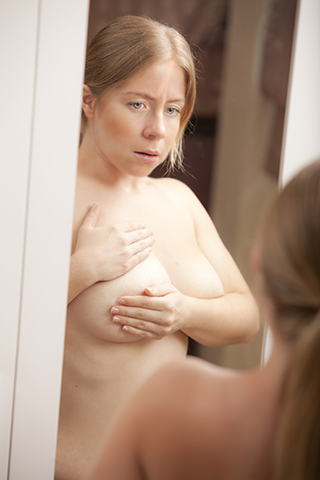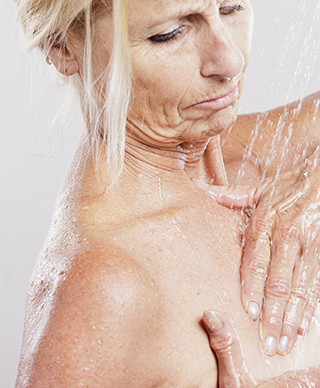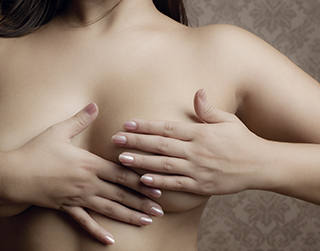The National Breast Cancer Foundation encourages women of all ages to perform a breast self-exam at least once a month in order to find early signs of breast cancer. A self-exam involves feeling the tissue of your breast and the surrounding area in order to identify any changes that could signify a cancerous lump or thickening. Even women over age 40 who receive an annual mammogram, which can detect breast cancer before you are able to feel a lump, should perform a self-exam in order to familiarize themselves with the “normal” look and feel of their breasts so that they can identify any changes. To keep track of your monthly self-exam, you may want to take a calendar and fill it in on each month, do it every month on the day you get your period, or put a monthly alarm on your phone.
There are three main components of a breast self-exam. The first should be performed in front of a mirror, the second in the shower, and the third while lying down. This will ensure that you have increased your risk of identifying any tissue changes from as many angles as possible. Keep in mind, however, that pregnancy and nursing can change the feel of your breasts due to modifications in the milk ducts.
In Front of a Mirror

While standing undressed from the waist up in front of a mirror, look carefully at your breasts. Check for any changes in shape, size, or position, as well as for any changes to the skin itself, such as discoloration, dimpling, or tightness, any of which could be a sign of breast cancer. Repeat this process with your hands pressing on your hips so that the muscles beneath your breasts tighten, bending forward with your shoulders pushing forward, and clasping your hands behind your head with your elbows pressing backwards. Make sure to lift your breasts to check the skin on the underside and to gently pull on your areola to check for any abnormal discharge.
In the Shower

Besides for visually examining the breasts, you’ll want to feel the breast tissue to identify any changes. The easiest location to do this is in the shower so that your fingers will be able to move smoothly over your breasts. Make sure to feel both underarms, above and below your collarbone, and the entire breast from bra line to collarbone, for unexpected lumps or thickenings. It is easiest to do this with one arm raised behind your head and the other hand feeling with the flat surface of your fingers.
Lying Down

You may want to moisten your fingers with body lotion to complete this last component of a breast exam. To spread out the breast tissue, lie down with your right shoulder on a small pillow and your right arm behind your head. Then use the flat fingertips of your left hand to feel in small circular motions around the entire area of the breast. Move slowly, taking note of any bumps or uneven sections of breast tissue. Pay special attention to the nipple area, making sure that there are no lumps or other signs of breast cancer beneath it and that you gentle pressure can easily push the nipple slightly inward.
Keywords: breast self exam, breast cancer, breasts, breast tissue
